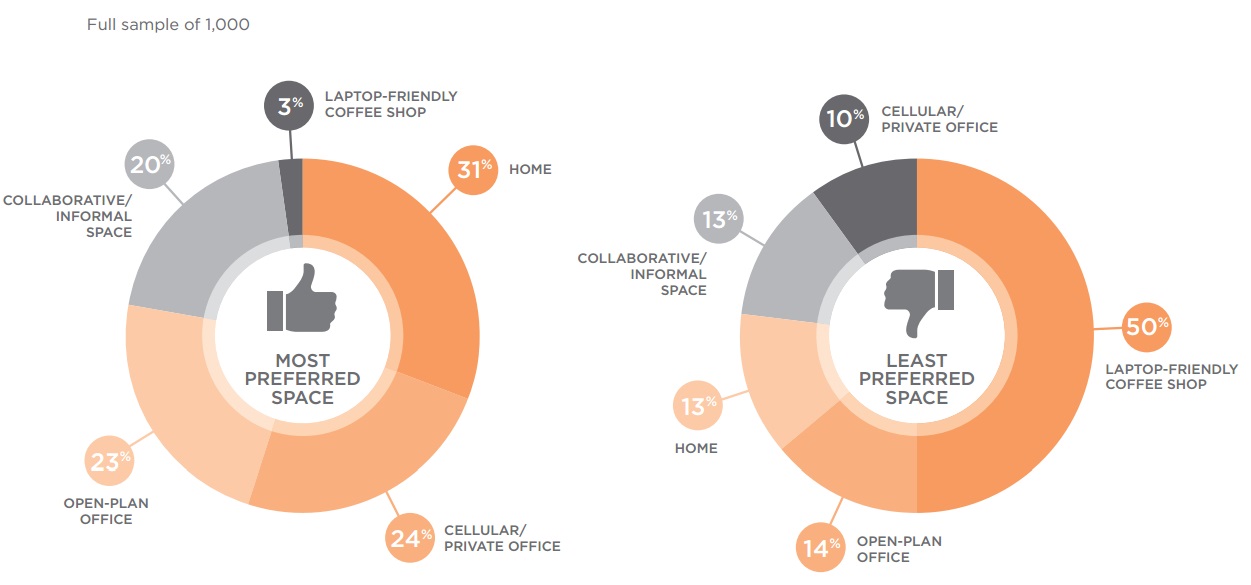
London employees’ responses to our Office Futures survey suggest that homogenous open-plan office environments are far from suitable.
In order to ascertain what type of workspace respondents would prefer as their predominant place of work, they were given five options and asked to rank them from first to fifth choice. Overall, Cellular/Private Offices received the most positive response, closely followed by Home. Open-plan Offices were only the third-ranked option; despite being the main form of office space in the UK.
The two pie charts below show the breakdown of both respondents’ ideal (first choice) workspaces and their least favourite option out of the five. What is clear, is over half the sample chose the more private forms of work area – Home and Cellular/Private Office – with less than a quarter opting for the Open-plan Office; a workspace type that is beginning to feel pervasive in its adoption by employers.
Assuming you had the choice to determine your own work environment, please rank the following options in order or preference as your main place of work during a working week.

Although the data highlight a rather stark need to provide employees space that they can work privately in, we also need to bear in mind that a significant minority prefer more open or collaborative workspaces. To go from one form of homogeneity in our workspace to another would be a big mistake. Falling back on the less open workspaces of the past would alienate and demotivate those staff that prefer openness and collaboration, and find their work less affected by open environments.
Rather, what is needed is a more detailed understanding of both employees’ tasks and also their personalities, with heterogeneous spaces then designed to fit.
For example, a sales-orientated company may operate more productively in open-plan space than a firm of lawyers. But that does not mean that one should operate exclusively in open-plan space whilst the other’s office consists predominantly of private offices. The sales company may have certain staff whose tasks are better suited to more private working, and, on the flips-side, a law firm’s business development and marketing teams may operate productively in open-plan space.
We are already seeing larger employers – at least in their HQs – take this issue very seriously and act upon it. However, for smaller firms – or larger employers’ satellite offices – the issue is not easily solved within more limited spaces. This issue is exacerbated by occupiers’ demands for shorter leases, something that precludes notable capital expenditure on ‘fancy’ office fit outs, given the inability to amortise the expenditure over such diminutive lease terms.
Looking forward, then, the onus moves to investors. Those able to square their customers’ (tenants’) desire to improve workforce productivity - through the provision of more diverse workspaces – with their equal need to minimise lease lengths, will find many companies knocking at their door.
